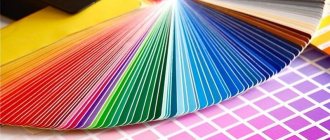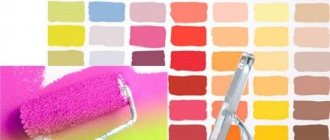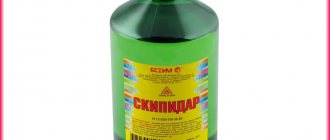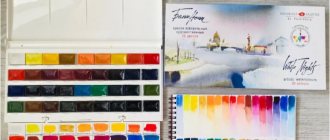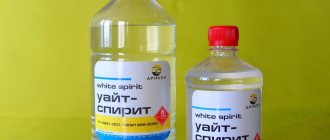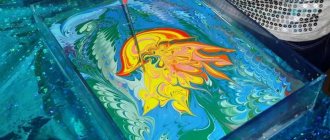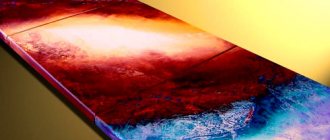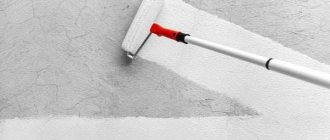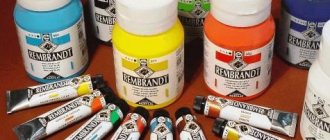What could be more fun than drawing? There is little that can compare with it in popularity. Both adults and children are passionate about this activity. As soon as the baby can hold a pencil in his hands, he immediately begins to “create” - at first these are intricate scribbles, later - meaningful drawings. The activity not only promotes the development of creative potential, but also has a positive effect on the development of fine motor skills. Who knows, maybe right now a future great artist is concentrating on drawing random lines!
What are paints?
Currently, there are many types of paints - many are probably interested in how and where they come from. The basis is most often chemical solutions. An aqueous dispersion of polymers will allow you to create a water-based emulsion, drying oil will create an oil paint, and an aqueous solution of organic polymers will create an adhesive paint.
To obtain a dye of a certain color, pigments are used. Thanks to just three colors - blue, red and yellow, you can get all the others. It is important to mix them correctly.
Quality
Do you want to choose the perfect paints to get the most out of your creativity? Then you need to understand a few basics that determine the quality of watercolor.
When choosing we take into account:
- the number of pigments used;
- transparency rating;
- light fastness rating;
- graininess (granularity) of paint.
To find this information, you need to read paint labels or do a little research on the manufacturer's website. Let's take a quick look at these characteristics so you understand what they mean. The composition includes one, two, three, rarely several pigments. Pigments are designated by a color index code. For example, if a label says “PB28,” that means it contains “Blue Pigment No. 28,” which is commonly used to produce cobalt blue. Granular formulations tend to develop a grainy texture as they dry. This effect occurs due to the uneven distribution of pigment particles on the surface of the paper. Granular pigments react this way because they are larger, heavier, and have less uniform shapes than other fine pigments. Now imagine looking at a manufacturer's paint label. What exactly should you be looking for? Beginning artists are better off choosing paints that meet the following criteria:
- one pigment;
- transparency;
- high light fastness;
- low grain size.
Why is it important? Transparent inks with a single pigment produce more intense, saturated images. They combine well with each other and do not create “dirt.” Opaque or multi-pigment watercolors have complex processing qualities and require professional mixing. It is better to choose one with very good light fastness - this indicator determines how long the finished painting will retain the brightness of its shades. For experienced artists, grain is more of a personal preference. It is important to understand here that granulated products are more difficult to process once applied, but they can be used to create relief. The letter G is indicated on packages of granulating paints; there may also be an additional N (no) or Y (granulation possible).
Story
Without bright colors, the world and objects would be dull and dull. It is believed that the oldest rock paintings are over 17 thousand years old! The first paints were primitive - bright minerals attracted attention, they were used to make powder, to which some elements were added to obtain a means of imprinting their knowledge. If only the ancient people knew what paints were available now and how easy it was to buy them.
Article Paints from the Brockhaus and Efron encyclopedia
Paints for painting are mainly of mineral origin, only some are organic. This is a consequence of historical development, when substances found in the earth were used. Now the situation has changed - a large number of paints are produced in laboratories and factories. The number of paints for painting manufactured and offered in trade is more than three hundred. The technology of their manufacture in Germany, England and France has reached great heights.
How to choose: rules for buying paints
It is important to determine how much painting paints cost in order to choose quality products. Pay attention to well-known brands. The paints should not have a strong unpleasant odor. When choosing products for babies, carefully read the composition, which does not contain toxic substances.
The manufacturer, production date and shelf life matter. The most convenient paints in a jar, characterized by economical use. The main indicator is homogeneity. Shades should be natural, not flashy, not poisonous. Children buy 4-6 colors, and at older ages 12-24 shades.
Paints for painting: types and characteristics
Acrylic paints are used for various purposes; the following types of paints are distinguished.
Children's
- Watercolors are environmentally friendly, intended for drawing on paper. The works are bright and light. They most often work in schools, kindergartens or at home.
- Finger ones are natural and safe. So that the young artist does not decide to taste acrylic paints, they are made unpleasant - bitter, salty, sour. Having felt this once, it is unlikely that the baby will want to repeat the experiment.
- Gouache is thick and bright. It comes in all sorts of colors - bright, neon, fluorescent. It also comes with sparkles - the girls will be delighted! A set of these jars will last a long time. This is the best choice when creating posters for all kinds of events.
Professional
Watercolor and gouache are also used, but there are several more varieties:
- Acrylics are bright colors that do not fade over time. There are liquid and thick ones, which allow you to create an interesting texture.
- Oil based ones are most often produced in tubes. This is the choice of professional artists with experience and skills. Allows you to create the most realistic images of humans and nature.
- Tempera - durable, but prone to fading. Can be used on any substrate - wood, paper, canvas, plaster, etc.
Why choose acrylic paints?
Acrylic compositions are a combination of watercolor and oil. The main advantage is the beauty of the image, which is protected from exposure to water and sunlight. Suitable for decorative drawing and applied arts.
It is not difficult to master drawing skills. You will need plastic, wood, paper, cardboard or canvas. It is allowed to use natural and synthetic brushes. Using a palette knife, apply bright strokes. It is important to know how to dilute acrylic paints for painting. You will need water or a special solvent.
First, they decide on the base on which acrylic will be applied. If you need to paint on walls, plain water will do. The liquid should be clean and cool. The proportions are different, so the characteristics of the paint are different.
The initial layers are applied with a 1:1 dilution, then the paint does not accumulate on the brush. For the secondary layer, you will need a 1:2 ratio so that the brush is saturated with pigment and distributes it evenly on the surface. If you dilute the paint with water 1:5, you get a translucent layer, and the pigment can penetrate into the pores. The gradient is easy to obtain with a paint to water ratio of 1:15.
It is important to know how to dilute paints for painting if they have dried out. For acrylic use boiling water. To do this, place some of the paint in a container and fill it with water until every particle is saturated. After this, the paint is again suitable for painting.
Composition of paints
Pigment is the main part of paints and enamels. It determines how opaque and resistant to atmospheric factors the coating will be.
Binders
They are responsible for the quality of the paint - the binding ingredients hold its particles together, resulting in a reliable and dense layer. This is one of the most important components that determines density, density and resistance to atmospheric and mechanical influences.
If the paint is polymer-based, then the binding element is polymer, nitrovarnish is cellulose derivatives, and oil varnish is drying oil.
Solvents
These are liquids used to change the thickness of the composition. They tend to form a film - a good paint layer is obtained. Depending on the type of paint, they are easily volatile organic liquids - white spirit, solvent naphtha, acetone, turpentine, etc. They are added to make it easier to apply.
Color
How to choose watercolor paints of the right shade? There are many colors to choose from and their specifications vary by manufacturer. Technically, you can create any shade by simply mixing the primary colors (red, yellow and blue), but mixed colors often turn out dull, lifeless. Single pigment shades are much brighter and more intense. Not all artists can afford to buy every color they need, so there's a lot to think about when it comes to creating a limited but versatile palette. This palette will differ from artist to artist. There are objective measures such as lightfastness and transparency, but choosing colors ultimately comes down to preference: ask 10 different artists, each of them will list their palette. Some will only use 10 colors, while others may use over 50! One artist may prefer light cadmium red, while another may prefer English Venetian. Beginners need a basic color palette to get them started, as you gain experience and buy additional colors you will figure out what works for you and what doesn't. When purchasing your first watercolor, start with a beginner's set or a student's set from a reputable brand (we'll cover them below). This is the easiest way to purchase a starting color palette to work with. In the future, you will be able to add new shades to it as needed, not necessarily from a similar manufacturer. There is a combination of base transparent and opaque colors that are mixed together to create different shades. These are not "universal" or "best" colors, they are just an approximate range of what you will need to build.
If you want to buy watercolors in different shades separately, here is a paint selection guide to help you choose your first palette:
- Start with a set of six primary colors: warm and cool versions of yellow, blue, red.
- In theory, you can mix any color using just the primary colors, but in reality you need at least one warm and cool version of each primary color to get a full range of shades.
- You will notice that there is neither black nor white in the base palette. Some artists buy a single black pigment, but it can also be created by mixing primary colors. You can also buy white paint, but most watercolorists (especially purists) prefer to use a white paper surface instead.
- Color names. Keep in mind that shade names may vary between brands. Two different manufacturers may use the same color name, but different pigments that produce different shades. Therefore, if you like a certain color, but want to try buying it from another manufacturer, look for the specific pigment it contains (usually three numbers: for example, 533 is blue, 257 is yellow). Some pigments are very rare and difficult to find, which always affects the cost.
Durability
Paint durability refers to its ability to withstand exposure to light and moisture without fading, darkening, or changing color. Also called lightfastness, this quality is important and the level of lightfastness is indicated on the packaging of watercolors. This indicator determines whether future generations will be able to appreciate your art, because low-quality paint will quickly fade and the painting will lose its original brightness and detail. Look for paints with high light fastness ratings. It is indicated by the marks on the packaging “*** lightfast”, “**** good lightfastness”, “***** extremely lightfast” (lightfast, good lightfastness, excellent lightfastness, respectively). On foreign-made paints, other designations are sometimes used - Roman numerals (on the ASTM scale). A product with the number I has a guaranteed light fastness of more than 100 years, II – 100 years, III – 50-70 years (normal light fastness).
Transparency
Watercolor paint is valued for its transparency: the ability of light to pass through the paint and reflect off the white surface of the paper, creating a remarkable luminescent effect. You can purchase opaque watercolor paints, but if you're just starting out, don't worry too much about this distinction. Some purists don't believe in using opaque watercolors at all. With practice, you'll learn to use transparency to enhance your watercolor paintings and learn whether you need opaque colors. You need to think about paint opacity when it comes to layering. It's important to plan ahead and apply sheer shades before opaque ones, otherwise you won't be able to achieve the effect. You can make opaque colors more transparent by thinning them with water, but this may reduce their intensity.
Watercolor painting technique
The basic techniques used when working with watercolor paints have long been developed and have proven themselves in practice.
- Flat brush. If a sheet of paper is placed on an inclined easel, the top layers of paint will flow down, forming a uniform fill. The contours of the future drawing are drawn with a hard pencil. The paint is applied to the brush, after which one contour after another is painted sequentially. You need to start coloring from the top, going down layer by layer. The paint is applied in even, straight lines. Each subsequent layer slightly overlaps the previous one. If the work is left to dry at an angle, you will get original visual effects.
- Dry brush. The main feature of this technique is that watercolor is applied to dry paper, and the amount of coloring pigment exceeds the amount of water. To implement the technique, you will need paper with medium or high grain. Dry painting perfectly conveys the texture of the material. The paint is applied to the brush in the usual way, after which the moisture is removed with a paper napkin. Use the side of the brush to apply a stroke to the paper. A second stroke can be applied only after the first one has dried. When applying strokes, try to only lightly touch the sheet of paper with the brush. Brushes with a round profile and a small tip are optimal for this painting technique.
- Wet technique. To create smooth transitions between different colors, they resort to the so-called “wet technique”. Before applying paint, the paper is moistened generously with clean water. The paint begins to be applied at the moment when the water is partially absorbed and the characteristic wet shine on the paper disappears. If this does not happen for a long time, then excess water can be removed with cotton wool or a napkin. The wet technique uses predominantly pure tones, and the strokes must be very precise. To increase the transparency of the paint, it is allowed to apply a layer of water over the stroke. The transition from one color to another is made only after the wet shine has disappeared. Remember that using this technique it is impossible to obtain clear contours and transitions, but the colors will be light and airy.
- Combined technique. Wet and dry techniques can be successfully combined, which is what many experienced artists use. For example, the background can be made on wet paper, and the foreground elements on dry paper. In this case, the paper is wetted only in those places where it is necessary. First, all work is carried out using wet technology. Then the drawing is dried, and the elements are drawn using a dry technique. For example, this is how sketching from life was done in Pskov.

